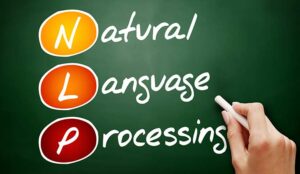What is Natural Language Processing?
Natural language processing (NLP) is a type of artificial intelligence (AI) that enables computers to interpret and understand spoken and written human language.
It uses machine learning (ML), deep learning, and analytics models, coupled with computational linguistics, or the application of computer science methodologies to human language, giving rise to capabilities like sentiment and emotion analysis, customer journey analytics, sophisticated business intelligence, and much more.
Computers are based on the binary number system, or the use of 0s and 1s, and can interpret and analyze data in this format, and structured data in general, easily.
The goal of NLP is to enable humans to communicate with computers using natural human language and vice-versa. NLP does just that through a complex combination of analytical models and methods.
NLP makes it possible to analyze unstructured data such as text in emails, social media posts, website content, chatbots, spoken language such as phone conversations, and importantly, the meanings and emotions behind that language.
Thanks to CallMiner
What Is NLP?
Essentially, natural language processing is a subfield of AI and linguistics concerned with how computers process human language. It covers areas such as:
- Sentiment analysis (how is the speaker/writer feeling – positive, negative, neutral?)
- Emotion detection (are they happy/angry?)
- Theme detection (what is the conversation specifically about?)
- Intent (why is the customer contacting the business?)
Linguistics (or rule-based techniques) consist of creating a set of rules and grammars that identify and understand phrases and relationships among words. These are developed by linguistic experts and are then deployed on the NLP platform.
NLP in Action
Take this example. “The branch staff were very helpful but the interest rates on your loans are too high, so I will go elsewhere.”
This is a complex sentence with positive and negative comments, along with a churn risk. Using NLP enables you to go beyond the positives/negatives to understand in detail what the positive actually is (helpful staff) and that the negative was that loan rates were too high.
Both of these precise insights can be used to take meaningful action, rather than only being able to say X% of customers were positive or Y% were negative.
If, instead of NLP, the tool you use is based on a “bag of words” or a simplistic sentence-level scoring approach, you will, at best, detect one positive item and one negative as well as the churn risk.
The issue is that, when it comes to a root-cause analysis, your tool’s insight will give the cause of churn as “staff experience and interest rates”. That’s why accuracy matters. You need a high level of precision and a tool with the ability to separate and individually analyse each unique aspect of the sentence.
Natural language processing has two main subsets – natural language understanding (NLU) and natural language generation (NLG).
As the names suggest, NLU focuses on understanding human language at scale, while NLG generates text based on the language it processes. This could mean reading a range of documents and creating a summary of them that is intelligible and useful to humans.
Thanks to Enghouse Interactive
Author: Robyn Coppell
Published On: 17th Mar 2023 - Last modified: 24th Mar 2023
Read more about - Definitions, CallMiner, Enghouse Interactive, Language



















